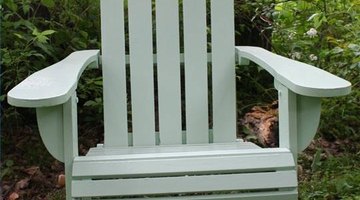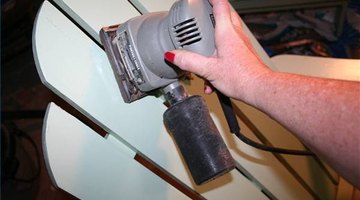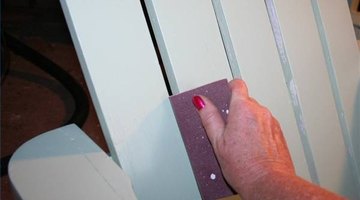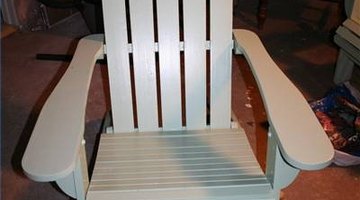How to Repaint Adirondack Chairs
Adirondack chairs are a comfortable, inviting addition to your yard or patio. Whether you have purchased used chairs or have had yours for years, the paint will eventually weather and peel. But don't replace those chairs with expensive new ones!

You can repaint your Adirondack chairs and give your outdoor living space a fresh new look.
Things You Will Need
- Electric sander and sandpaper
- Sanding blocks
- 2" paintbrush
- 1" paintbrush
- Primer/sealer, such as Bin brand
- Exterior-grade paint
- Screwdrivers or box wrenches
-
Be sure your Adirondack chairs are thoroughly dry before you begin. Bring them into a shed or garage if you can, or at least under a porch roof, and keep them out of the rain and morning dew for several days. Then sand them smooth with a hand-held electric sander.
-
Use a flexible sanding block to reach the spaces in between the chair slats. Then, tighten all the hardware on the chair with screwdrivers and/or wrenches. (Electric sanding tends to loosen the screws, and particularly any bolts on Adirondack chairs which fold for storage.) If the chairs are quite old, you may need to replace some screws or nuts that have been lost through wear.
-
Once the chair is sanded and the hardware tightened, paint the chair with one coat of a sealing primer such as Bin brand. A sealing primer will cover any water stains and knots in the wood, and will provide a protective barrier against future water damage. Be sure to put a good coat of primer on the bottom parts of the boards which will be touching the ground.
-
Use a 2" or larger brush for the flat surfaces of the arms and slats, and use a thin, 1" brush to get between the slats. These areas between slats are where water tends to accumulate, so it is important to ensure that they are thoroughly covered with primer and then with paint.
-
Start with the chair upside down to ensure that the parts which are closest to the damp ground are completely painted. After using the small brush between slats, reach under the chair with a rag and wipe down the drips which will inevitably run through to the other side. Let the bottom dry, then flip the chair over and prime all surfaces you can see with the chair right-side-up.
-
Once the primer has dried according to the manufacturer's directions, flip upside down and paint the bottom with exterior-grade paint. When that has dried, turn the chair right-side-up and paint the top surfaces. Repeat this process one more time for two full coats of exterior-grade paint over the primer. Let dry completely before moving the chair back outside.






Tip
It is possible to paint an Adirondack chair with spray paint instead of using canned paint and brushes, but you will get a much more weather-resistant coating with paintbrushes, sealing primer, and exterior paint. Choose bright colors to complement your flower garden, or use leftover exterior house paint to match your home. Municipal recycling centers often have leftovers of exterior paint available for free for you to mix and match! You can further enhance your repainted chairs with stencils or freehand painting. Just be sure to use exterior-grade paint that will not wash off in the rain.
Warning
Always wear eye protection when sanding. Be sure to prime and paint in a well-ventilated area and away from any open flames.
The Drip Cap
- Adirondack chairs are a comfortable, inviting addition to your yard or patio.
- You can repaint your Adirondack chairs and give your outdoor living space a fresh new look.
- Bring them into a shed or garage if you can, or at least under a porch roof, and keep them out of the rain and morning dew for several days.
- These areas between slats are where water tends to accumulate, so it is important to ensure that they are thoroughly covered with primer and then with paint.
- When that has dried, turn the chair right-side-up and paint the top surfaces.
References
Resources
Writer Bio
A freelance writer since 1978 and attorney since 1981, Cindy Hill has won awards for articles on organic agriculture and wild foods, and has published widely in the areas of law, public policy, local foods and gardening. She holds a B.A. in political science from State University of New York and a Master of Environmental Law and a J.D. from Vermont Law School.
Photo Credits
- Cindy Hill
- Cindy Hill
More Articles



